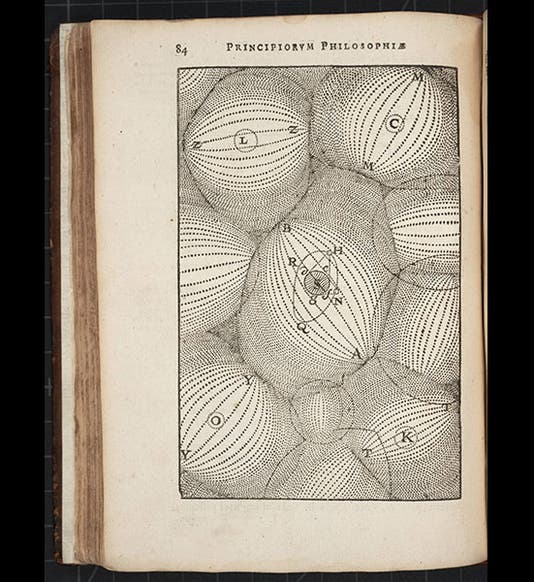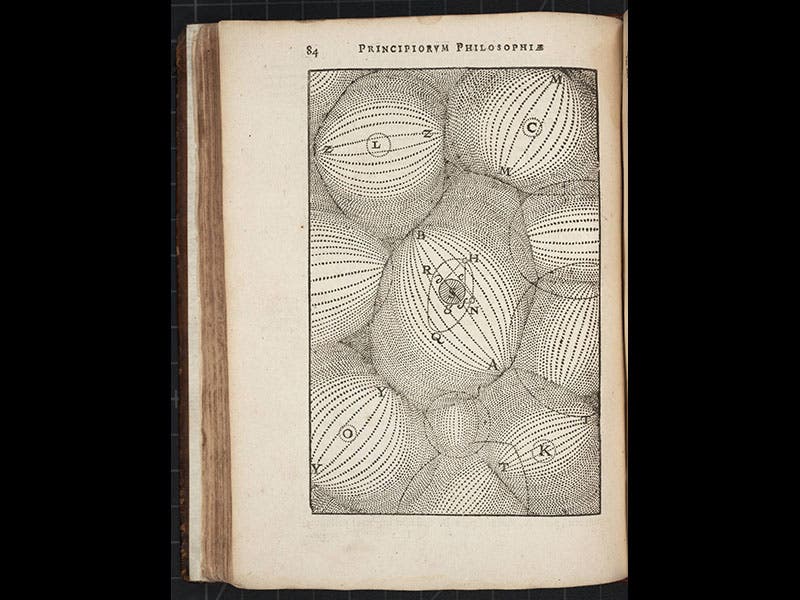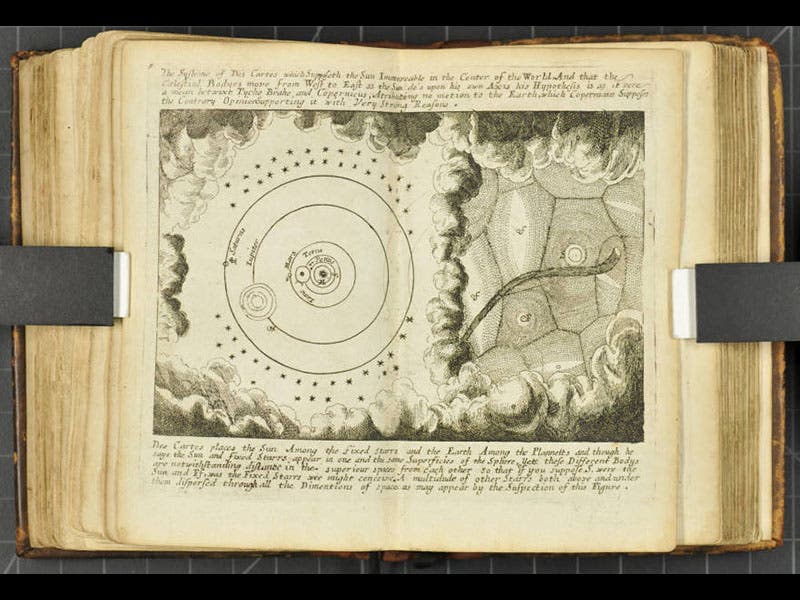Scientist of the Day - René Descartes
René Descartes, a French natural philosopher and mathematician, was born Mar. 31, 1596. One of the big problems in 17th century cosmology was to explain what moves the planets around the sun. Earlier cosmologists had used spheres to produce planetary motion, but spheres were on the way out, especially as planetary orbits grew elliptical. Kepler had suggested that a magnetic force in the sun might sweep the planets around like a broom. Descartes, in his Principia philosophiae (1644) proposed that the sun is at the center of a vast vortex of rotating invisible matter, and the swirl of the vortex carries the planets around, rather like leaves in a whirlpool (see first image above). Descartes further proposed that every star is a sun, with its own vortex, so the cosmos is a veritable sea of vortices. Because this provided a mechanical explanation and did not require action at a distance, and because it was easy to visualize, the vortex theory of planetary motion was adopted and pictured a number of times in the century after Descartes. We show above a potpourri of such images, from works in our collection, by Barin (1686, second image), Fontenelle (1686, third image), Seller (1700, fourth image), and Doppelmayr (1742, fifth image).
The vortex theory did not require a gravitational force, so when Isaac Newton proposed a universal force of gravitation in 1687, many preferred Descartes’ explanation, because Newton’s force was not a mechanical force. However, Newton’s gravitational theory worked so well in explaining such matters as the tides, the shape of the earth, and the variation in pendulum clocks with changes in latitude, that cosmic vortices were in general dissipation by 1750, and Descartes’ swirling matter swirled itself into total and complete invisibility by the end of the century.
Dr. William B. Ashworth, Jr., Consultant for the History of Science, Linda Hall Library and Associate Professor, Department of History, University of Missouri-Kansas City











